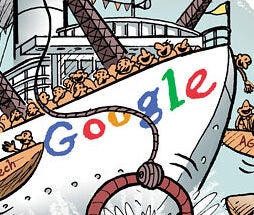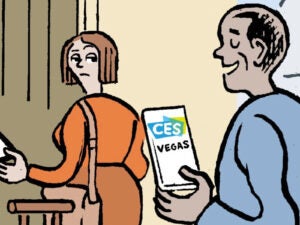Ads Are There For You
Publishers attempting to cut themselves a slice of the commerce pie are running into an unlikely – or maybe not so unlikely – competitor: Google. Seems like everywhere they turn, there’s Google with a new way to penalize them for experimenting with alternative revenue sources.
Take BuzzFeed, which has emphasized the growth potential of its commerce business in the lead-up to its impending IPO. But here’s the problem: BuzzFeed’s commerce revenue slowed to just 14% in Q3 from 80% in the first half, and all signs point to another shortfall in Q4.
What happened? Well, it’s no coincidence that earlier this year Google adjusted its search algorithm to diminish sites with affiliate-style links to outside merchant shops. Publishers with affiliate links saw traffic reductions of 20% to 30%, The Information reports.
But as commerce falters, advertising is there to pick up the slack. BuzzFeed is still on track to meet its overall revenue goals for 2021, largely on the strength of its ad business. Vice is in a similar boat. As it prepares for its own IPO, Vice has increased its focus on video content and branding – and yet 35% of Vice’s revenue still comes from advertising, Insider reports.
Guess publishers will have to keep on leaning into ad revenue to support themselves – although competitors lurk there, too. (We’re looking at you, Google.)
Off Brand
It’s a common misconception that brand marketing and performance marketing are polar opposites: the unmeasurable upper-funnel vs. clickable ads that can provide immediate conversions down at the bottom. But in fact, brand marketing is best seen as a tactic within the performance marketing category, argues Eric Seufert at Mobile Dev Memo.
And it’s more than an exercise in semantics. Performance takes a back seat in deference to brand marketing in many organizations, which can be “stultifying,” Seufert said, because it means fewer creative assets and less experimentation for specific platforms. Brand marketing also swipes the lion’s share of the budget before it can reach the “performance” team (which is to say, the people who must rigorously justify every penny they spend).
That’s not to say brand marketing isn’t a useful tool. It’s probably the best way to sell in store when shoppers are presented with multiple similar products wrapped in recognizable branding. But brand marketing can and should be an ROI-based channel. “What primarily causes the confusion that leads to inappropriate investments, bad incentives and structural inefficiencies within marketing organizations is the notion that brand and performance marketing sit at the same hierarchical height. But they don’t,” Seufert wrote. “Performance marketing is a category, and brand marketing is a tactic that can sit within the performance marketing category.”
Back Outside
Media businesses and marketers are struggling to keep their audience engagement levels where they were during the pandemic.
Following a boom in media consumption last year, new growth is tapering off and will probably keep on dropping into 2022 as people return to pre-pandemic routines. But behavior isn’t the only inhibitor. Pandemic-related supply chain interruptions are also having an impact on media consumption, Axios reports. You can’t use a Roku device to binge if your Roku device is stuck on a ship somewhere.
But it’s not really fair to compare this year and last, which was skewed by the lockdowns. Growth in news consumption and streaming subscriptions, for example, remain much higher than in 2019, according to data from Similarweb.
And although we’ve hit a point of saturation for growth across many subscription sectors, media consumption likely won’t go back down to pre-COVID levels. And hey, there’s always still room for the growth of good old AVOD.
But Wait, There’s More!
Can Stat, a health and life sciences publication born out of the Boston Globe, make a niche media play work with its B2B media approach? [The Rebooting]
Meet Zestworld, a subscription for comics and graphic novels, where creators can monetize their own merch or media adaptations. [NYT]
The new “Black Friday” is … every day. Shoppers buy at any time as long as the price is right, and they increasingly look to people and sources they trust on what to purchase. [Protocol]
The CMA, The UK’s antitrust watchdog, is expected to block Facebook’s $315 million acquisition of Giphy. [FT]
As General Electric and other old-school behemoths break up, Amazon, Apple, Alphabet, Microsoft and Meta are taking their place as the do-everything companies of the future – and business schools are taking notice. [WSJ]
You’re Hired!
Jack Dorsey, Twitter co-founder and CEO, has stepped down (here’s his note to employees), and to be replaced by longtime CTO Parag Agrawal (his note).
Lego’s in-house agency names former McCann Australia CEO as its new chief. [Adweek]















